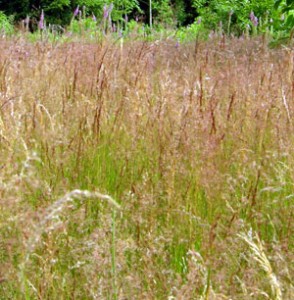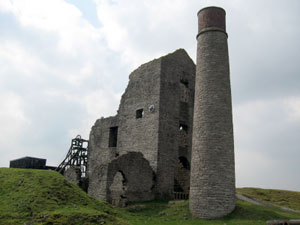Phytoliths, metals and phytoremediation.

Plants take up essential nutrients (nitrates, phosphates, potassium, magnesium etc) through their roots, but some also take up other, more unusual substances – such as silicon, nickel, cadmium, copper, cobalt.
Grasses, in particular, are known to take up silicon and then deposit it in their leaves. The silicon that they absorb is converted into tiny granules called phytoliths, which are often located under the waxy cuticle. It has been suggested that these phytoliths make the leaf tougher and less ‘attractive’ to herbivores. The phytoliths wear down the teeth of herbivores, be they voles or sheep. Herbivores have 'open roots' to their teeth, that is, they grow throughout the life of the animal. This is in contrast to the teeth of carnivores, which have closed roots.
This defence by grasses and other plants comes at a cost, the absorption of silicon and its conversion to phytoliths uses up energy; energy that could be used for growth or reproduction. Professor Sue Hartley, a plant biologist at the University of York is now investigating whether silicon absorption by grass species – Poa annua and Lolium perenne really does offer some protection against herbivores.
Whilst it is possible to understand the uptake of silicon by some plants, the absorption and accumulation of metals like Nickel, Cadmium and Copper is perhaps more problematic. However, some 450 different species (worldwide) can absorb and accumulate ‘toxic’ metals, many grow in ‘poisoned’ or toxic soils, like former mine workings.  Some are hyper-accumulators – taking up metals to many, many times the concentration in the soil. For example, Sève Bleue or Niemeyera acuminate – a plant of New Caledonia accumulates nickel to such a degree that its sap is a bright blue / green colour.
Some are hyper-accumulators – taking up metals to many, many times the concentration in the soil. For example, Sève Bleue or Niemeyera acuminate – a plant of New Caledonia accumulates nickel to such a degree that its sap is a bright blue / green colour.
Like silicon, it has been suggested that these metals serve to protect the plant against being eaten by herbivores but there is little evidence. Recent work with the Alpine Pennycress (Thlaspi caerulescens) suggests that such plants may gain some selective advantage in terms of resistance to infection by various pathogenic bacteria. Evidence for this comes from the work of Helen Fones, at Oxford University who has been growing the pennycress in different concentrations of zinc, nickel and cadmium and looking at infection by the bacterium Pseudomonas syringae.
This phenomenon of phyto-accumulation or hyper-accumulation may be put to use in the area of phyto-remediation. This involves growing plants (that can accumulate specific metals, such as certain grasses or pennycress) in contaminated land so that the plants take up the metal (copper, nickel ….) and repeatedly harvesting the plants with the metal so that gradually the metal levels in the soil fall. Grasses are not the only plants that might be used in cleaning up contaminated land, for example, there have been reports that flowering Chinese Cabbage can accumulate Cadmium.
Comments are closed for this post.
Discussion
Perhaps see
http://www.ars.usda.gov/is/AR/archive/jun00/soil0600.htm
Plants that have accumulated very high levels of cadmium (or copper or …) can be harvested, and then ‘dried’ down, burnt and the metal recovered. Such a process (of growth and harvesting) would reduce the levels of the cadmium, copper / etc in the soil BUT it does take time.
Using the plants as a compost would only transfer the toxic metals to another area / soil.
What happens to the metals when the plants are harvested and composted?
Vital info – maybe it should be circulated to panners and those wishing to build on contaminated land , which, lets face it, is usually directed at affordable housing, and often offered by the big supermarkets, when ‘pitching’ for planning permission: wouldn’t it be great if the inclusion of such plants were compulsory on said sites.

About the comment ” sing the plants as a compost would only transfer the toxic metals to another area / soil” I should add:
Some recent research indicates that a grat deal of the toxic metals are sequestred inside the silicophytoliths. After senescence and decomposition of plant debris, the silicophytoliths are dispersed in the soil where they remain as one of their stable major components. Since the silicophytoliths have the ability to sequester heavy metals, and because they remain unchanged by weathering in the soil for many years, they can be used to recover contaminated soil with these elements through processes of phytoremediation.
Igo F. Lepsch
24 September, 2014